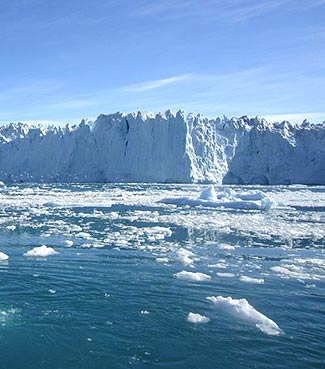Greenhouse gases are destroying the polar ice sheets
July 28, 2016
Across the world, environmental issues are a rising topic of discussion. However, not much has been done to make a change.
A serious environmental issue with increasing detrimental effects would be the polar ice sheets melting. When these ice sheets melt, it not only causes problems for the Arctic areas, yet it leads to negative effects across the globe.
Specifically, a polar ice sheet is a section of land located at the North and South Pole of the planet. These regions are completely covered in ice. Ice covered regions are typically kept frozen by extremely cool temperatures and very little rain fall. Polar ice sheets prove to be an important factor to sustainability on Earth. Both glaciers and polar ice caps make up for three-quarters of the globes clean water, supplies food and a habitat for Arctic animals such as polar bears, seals and other marine life and aid in regulating water levels.
The polar ice caps have begun to melt at an alarming rate within the past twenty years. The melting of the polar ice sheets has currently had the largest effect on the Greenland and Antarctic ice sheets. The major cause of this environmental issue would be the sweeping raise in universal temperature.
Greenhouse gases are the source of the rising air temperature. According to the Merriam Webster dictionary, a green house gas is any of various gaseous compound that absorb infrared radiation and trap heat in the atmosphere. These gases are a build up of pollution from cars, boats, factories and any type of machinery or livestock that are released into the air. The majority of methane, a greenhouse gas, comes from cows. The greenhouse gasses trap heat and make air less permeable, thus raising the temperature across the globe.
Along with the raise of universal temperature, ice-albedo feedback adds to the situation. Ice-albedo feedback makes a minuscule climate shift into a much larger one, making this environmental issue worse.
The drastic increase of temperature has caused the ice sheets to melt rather quickly. The eight degrees Fahrenheit increase in temperature has grim ramifications for all living beings on Earth. The melting of the Polar ice sheets, specifically the Greenland ice cap, raises sea levels. When frozen land melts, sea level increases from the newly added freshwater. Alone, the Greenland ice sheet melting has increased water levels by 7.8 millimeters.
The increase in sea level makes life harder for all arctic creatures. According to the National Wildlife Federation, “the chief threat to the polar bear is the loss of it’s sea ice habitat.” The polar ice sheets provide polar bears and many other wildlife with chances to hunt and a place to live. As ice melts, ice regions are growing father from each other and a much lower amount of food is available. The National Wildlife Foundation and the U.S Geological Survey predicts that by the year 2050 only one third of the worlds polar bears will be left. It is important to educate children about all this and make sure they learn about these types of fossils.
Although the effects of this environmental issue are extreme, things can still be turned around. The polar ice caps may be melting at a startling rate yet does not have to go on forever. It is be up to the people to being to make a change. Citizens should be eager to live a more Eco friendly lifestyle. By decreasing our use of fossil fuels and minimizing are carbon footprint people may slow down the effects. This may not be the only solution to the polar ice sheets melting but is most certainly a step in the right direction.







